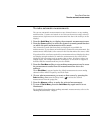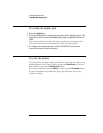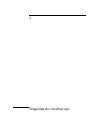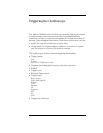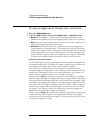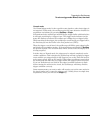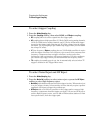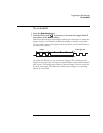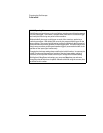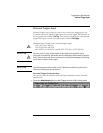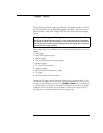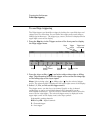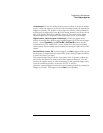
3-6
Triggering the Oscilloscope
To select trigger Coupling
To select trigger Coupling
1Press the Mode/Coupling key.
2Press the
Coupling softkey, then select DC, AC, or LF Reject coupling.
• DC coupling allows dc and ac signals into the trigger path.
• AC coupling places a high-pass filter (3.5 Hz for 54620-series analog channels,
10 Hz for 54640-series analog channels, and 3.5 Hz for all External trigger
inputs) in the trigger path removing any DC offset voltage from the trigger
waveform. Use AC coupling to get a stable edge trigger when your waveform
has a large DC offset.
• LF (low frequency) Reject coupling places a 50-kHz high-pass filter in series
with the trigger waveform. Low frequency reject removes any unwanted low
frequency components from a trigger waveform, such as power line
frequencies, that can interfere with proper triggering. Use this coupling to
get a stable edge trigger when your waveform has low frequency noise.
• TV coupling is normally grayed-out, but is automatically selected when TV
trigger is enabled in the Trigger More menu.
To select Noise Reject and HF Reject
1Press the Mode/Coupling key.
2Press the
Noise Rej softkey to select noise reject or press the HF Reject
softkey to select high frequency reject.
• Noise Rej adds additional hysteresis to the trigger circuitry. When noise reject
is on, the trigger circuitry is less sensitive to noise but may require a greater
amplitude waveform to trigger the oscilloscope.
• HF Reject adds a 50 kHz low-pass filter in the trigger path to remove high
frequency components from the trigger waveform. You can use HF Reject to
remove high-frequency noise, such as AM or FM broadcast stations or from
fast system clocks, from the trigger path.




